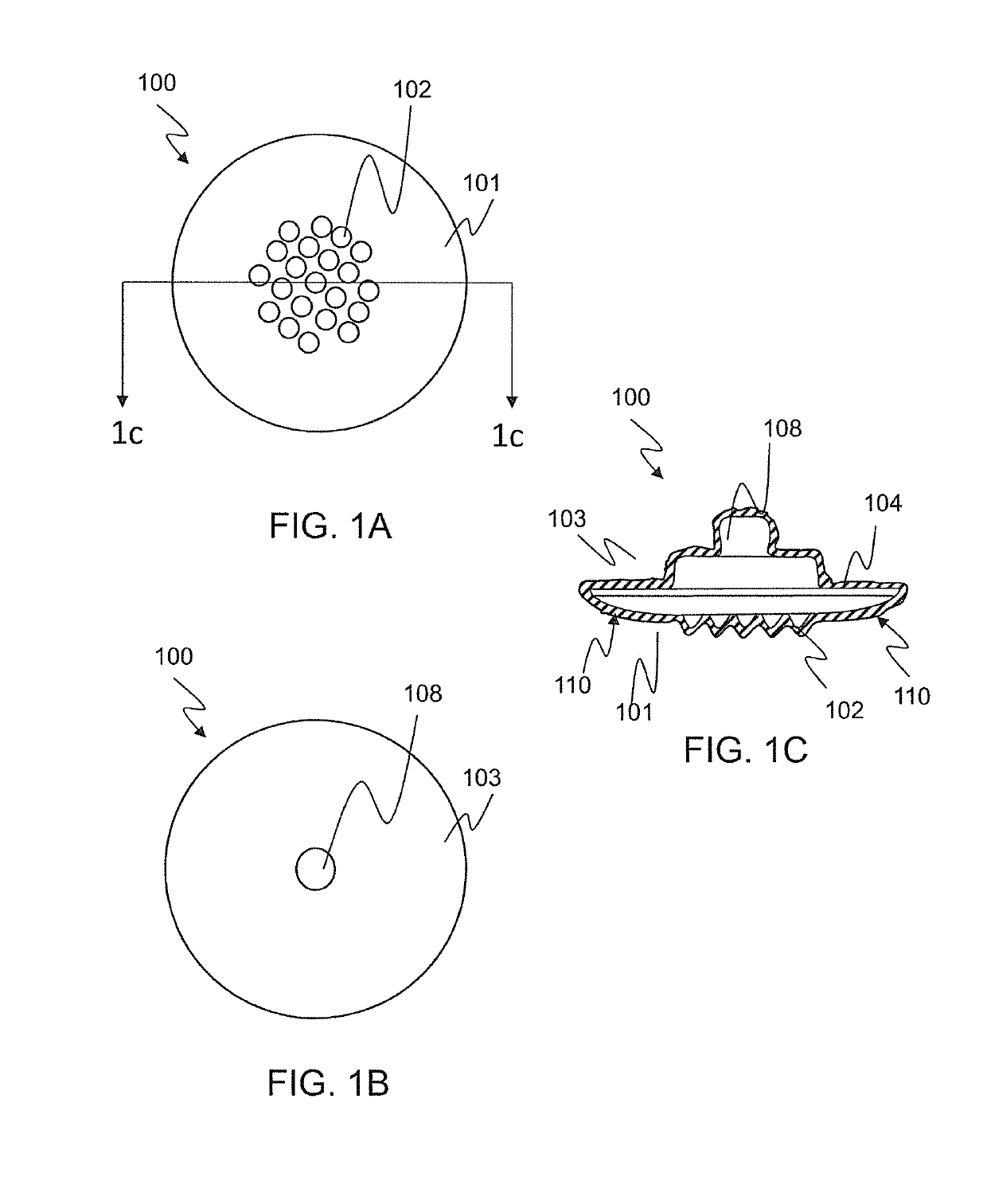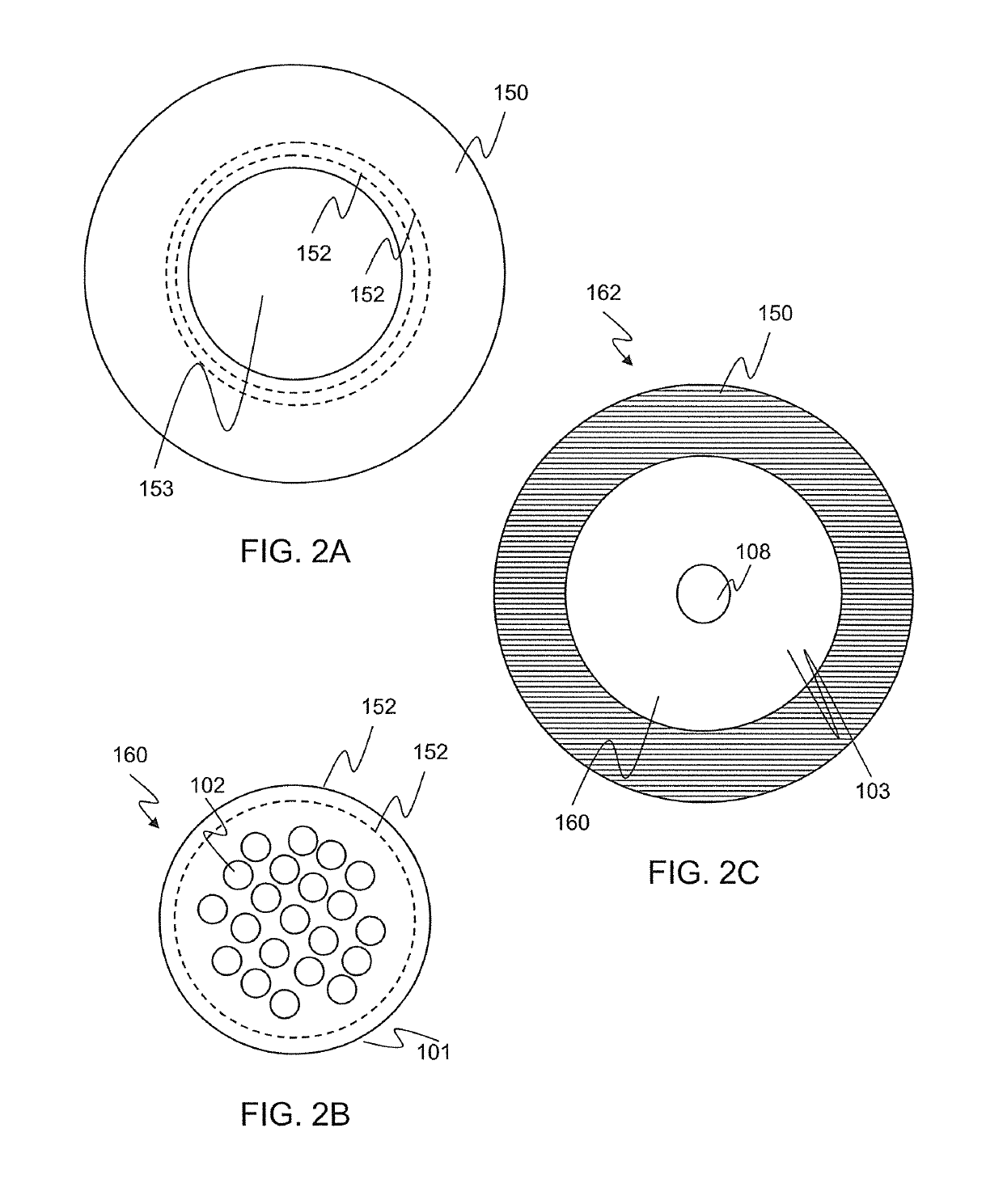Dry physiological recording device and method of manufacturing
a physiological recording and dry electrode technology, applied in the field of physiological recording devices, can solve the problems of dry electrodes still suffering from their own shortcomings, unable to meet the needs of physiological biopotential signal recording, and high manufacturing cost of those devices, so as to maximize performance, improve electrical signal, and minimize material cost
- Summary
- Abstract
- Description
- Claims
- Application Information
AI Technical Summary
Benefits of technology
Problems solved by technology
Method used
Image
Examples
Embodiment Construction
[0053]The present invention is directed to a physiological recording device and, more particularly, to a physiological recording device that can be used without skin preparation or the use of electrolytic gels. The invention is further directed to an encouragement ring which stabilizes and helps situate the physiological recording device on a subject's skin to help provide a better electrical signal, increase surface area, and to reduce and minimize noise and artifacts during the process of recording or monitoring a physiological signal. The invention is still further directed to surface features on a surface of the physiological recording device with a size and shape which that will not substantially bend or break, which limits the depth of application of the recording device, and / or anchors the recording device during normal application. The invention is even further directed to a method for manufacturing a physiological recording device.
[0054]The physiological recording device of...
PUM
 Login to View More
Login to View More Abstract
Description
Claims
Application Information
 Login to View More
Login to View More - R&D
- Intellectual Property
- Life Sciences
- Materials
- Tech Scout
- Unparalleled Data Quality
- Higher Quality Content
- 60% Fewer Hallucinations
Browse by: Latest US Patents, China's latest patents, Technical Efficacy Thesaurus, Application Domain, Technology Topic, Popular Technical Reports.
© 2025 PatSnap. All rights reserved.Legal|Privacy policy|Modern Slavery Act Transparency Statement|Sitemap|About US| Contact US: help@patsnap.com



